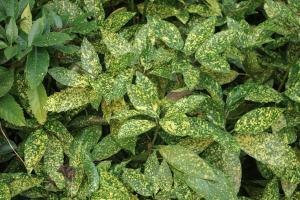How Many Trees Does the US Plant Yearly?
The United States has a long-standing tradition of forest conservation and management. From promoting sustainable forest practices to investing in research on the benefits of trees, the country has demonstrated a commitment to preserving its natural resources. In recent years, environmental concerns have led many to question how much progress the US has made in increasing its forest cover, and how many trees are planted annually to offset deforestation and mitigate climate change.
Current State of US Forest Cover
According to the US Forest Service, forest cover in the country has remained relatively stable over the past century. As of 2020, forests cover about 33% of the land in the continental US, which translates to roughly 303 million hectares. While this may seem like a large area, it is important to note that much of the land is privately owned and used for commercial purposes such as logging and agriculture.
Tree Planting Efforts in the US
Despite the massive size of US forests, there is still a need for tree planting efforts to promote sustainable forest management and mitigate climate change. The Forest Service and other organizations have implemented numerous initiatives to increase tree planting across the country. These programs focus on reforestation of degraded lands, afforestation of non-forested areas, and urban forestry.
One of the most ambitious tree planting efforts in recent years is the Trillion Trees Initiative, which aims to plant one trillion trees across the globe by 2050. The US is among the countries participating in the initiative, and has pledged to plant 40 billion trees over the next decade. This is equivalent to nearly one tree per American per month.
Impact of Tree Planting in the US
The benefits of tree planting in the US are vast and far-reaching. Trees absorb carbon dioxide and other pollutants from the atmosphere, helping to mitigate the effects of climate change. They also provide vital habitats for countless species of plants and animals, and help to prevent soil erosion and water pollution. In urban areas, trees can reduce air pollution and improve public health by providing shade and cooling during hot summer months.
Furthermore, sustainable forest management practices and responsible logging can create jobs and generate economic activity in the forestry sector. This industry contributes over $200 billion to the US economy annually, and provides employment to over 1.6 million people.
Conclusion
In conclusion, the US has made significant progress in promoting sustainable forest management and increasing forest cover over the past century. While there is always room for improvement, initiatives such as the Trillion Trees Initiative and other tree planting efforts demonstrate a commitment to preserving our natural resources for future generations. By planting trees, we can mitigate the effects of climate change, conserve habitats for wildlife, and support local economies.

 how many times do yo...
how many times do yo... how many planted tre...
how many planted tre... how many pine trees ...
how many pine trees ... how many pecan trees...
how many pecan trees... how many plants comp...
how many plants comp... how many plants can ...
how many plants can ... how many plants and ...
how many plants and ... how many pepper plan...
how many pepper plan...

































